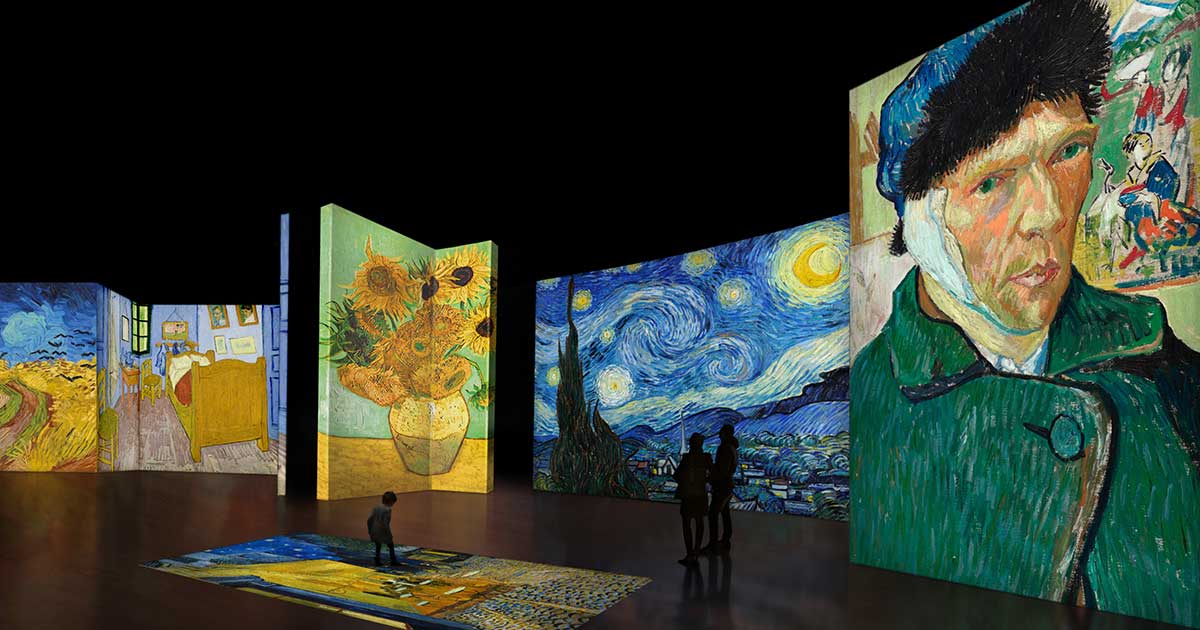Starlight Theatre's latest experience, Van Gogh Alive, gives people the opportunity to experience art in a truly unique way.
Billed as a "large-scale, immersive multi-sensory experience," the exhibit - housed in Starlight's 12,000 square foot stagehouse - combines light, color, sound and even fragrance to make guests feel like they are stepping into a Van Gogh painting.
The Van Gogh Alive exhibit opens October 23 and runs through the end of the year. Tickets can be purchased at kcstarlight.com.
While Van Gogh himself has no Kansas City connections, he does have a Jewish one.
Last year, Inna Rogatchi, an author, scholar, artist and filmmaker, documented Van Gogh’s Jewish connections dating to just six months before the artist’s passing in 1890.
According to Rogaachi, the first-ever positive critical opinion of Van Gogh’s work, while he was alive, came from the Jewish Dutch artist of Joseph Jacob Isaacson.
“Isaacson, who was a deep and well-educated person who specialized in Jewish mysticism, realized the merits of Vincent’s art and wrote about it in “The Portfolio” art magazine,” wrote Rogatchi.
Sadly, according to Rogatchi, such praise for Van Gogh was rare while he lived, and it would be Jews later on who would catapult his work into the stuff of legends.
It would be during an exhibition of his work, 11 years after his death that the world would really become aware of his genius, thanks to a Jewish family and a Jewish art dealer.
In March of 1901, a German Jewish art dealer named Paul Cassirer arrived in Paris to see an exhibition of Van Gogh at the Jewish-owned Bernheim-Jeune Gallery. Cassirer traveled to Paris after reading an article written by Julius Meier-Graefe, a German Jewish art historian who would later write a fascinating biography of Van Gogh.
“Meier-Graefe has noted and understood Van Gogh as no one else has done before him, and it is largely thanks to him that reading public in Germany received his deep and brilliant appreciation that has really made Van Gogh known in Europe,” wrote Rogatchi.
Cassirer was enamored by Van Gogh the second he walked into the Bernheim-Jeune Galleries. He immediately arranged to “borrow” five Van Goghs and returned to Germany. He would then spend the next 25-years pursuing Van Gogh’s paintings while building the artist’s appreciation and fame.
Just before the start of World War I began, Cassirer had 14 Van Goghs on exhibition in his Berlin gallery, and thanks to his efforts Van Gogh’s fame evolved, first in Europe and then worldwide. By 1914, according to Rogatchi, “German collectors, largely, and some museums, as well, owned as many as 120 oil paintings and 36 drawings of Van Gogh, the master about whom nobody heard a bit over a decade back. It was an extraordinary boom which has no precedent in the history of art.”
And two Jews, Julius-Meier Graefe and Paul Cassirer, were the reason.
“I think it is the paradoxicality of these great Jewish men’s brilliant minds that allowed them to grasp the genius of Van Gogh,” wrote Rogatchi. “They were so right. There was not and will never be an artist like Vincent Van Gogh. And our deep thank you should go to both of them for realizing the magnetism of the unsolved Van Gogh’s mysteries so early for the sake of us all.”
The St. Louis Jewish Light contributed to this story



